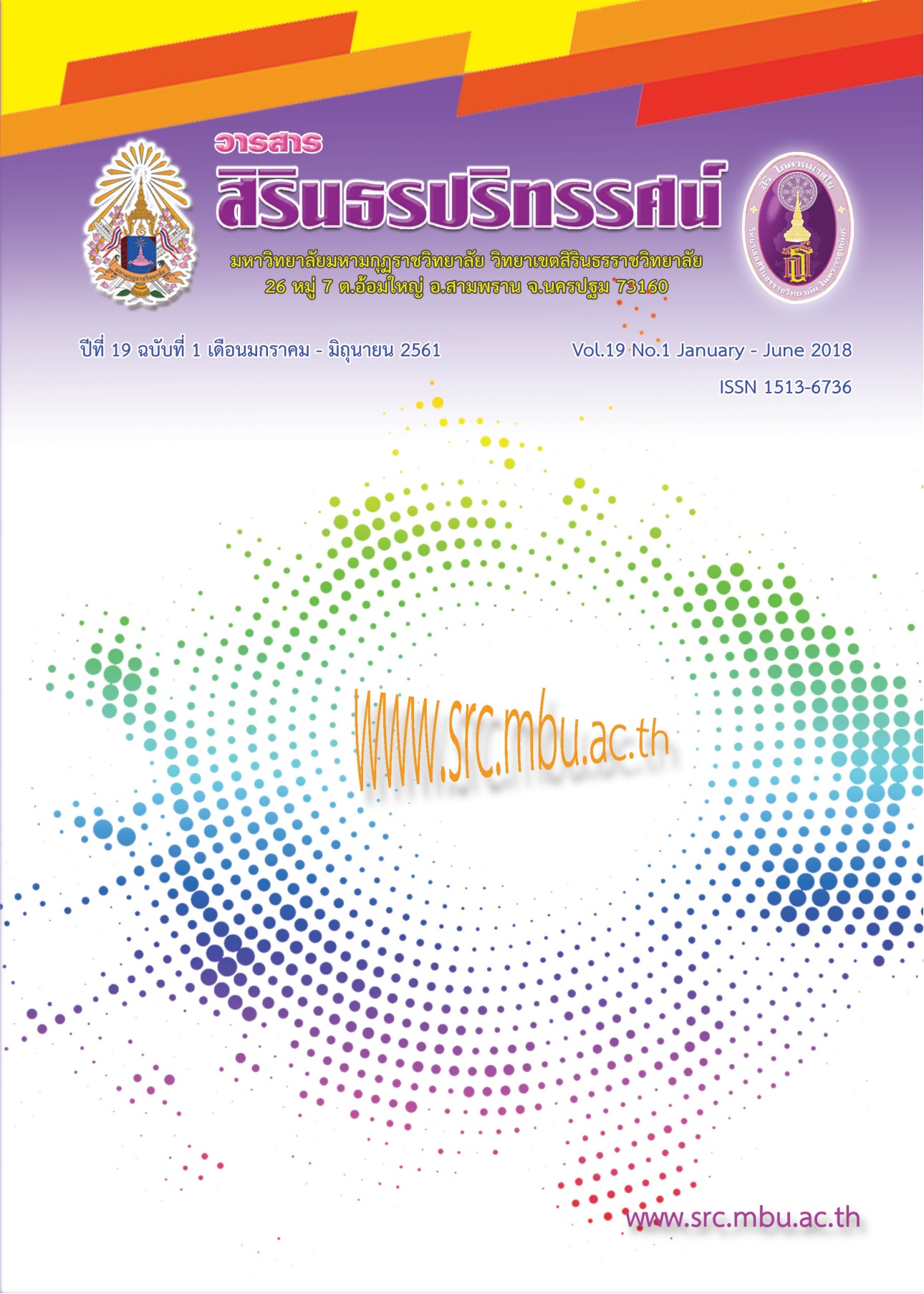AN ANALYTICAL STUDY OF THE MODEL OF MEDITATION TEACHING OF PHALUANGCITTANUPAB (WILL POWER) INSTITUTE
Abstract
The objectives of this thematic paper are as follows: 1) to study the model of meditation teaching according to Buddhist Doctrines, 2) to study the model of meditation teaching according to Phalangchittanupab (Willpower) Institute and 3) to analyze the value of the meditation teaching according to Phalangchittanupab (Willpower) Institute. This research is a qualitative study, focused on documentaries, studies mainly on the Tipitaka, documentaries relating and works of Phra Dhammongkolyan (Viriyang Sirintharo) and the consultation of the advisors. All the data are classified into system, concluded and presented in descriptive analysis.
The results of research are found as follows: 1) There are five outstanding models of meditation teaching according to Buddhist Doctrines as follows:- (1) Bud-dho (Buddha Inspiration) Model, (2) Anapanasati (Respiration Observation) Model, (3) Yubnho-Pongnho (Rising-Falling) Model, (4) Body and Mind Model and (5) Samma Arahang Model. 2) Phalangchittanupab (Willpower) Institute was established by Phra Dhammongkolyan (Viriyang Sirintharo) to teach Buddhist Meditation for his followers in the model of Bud-dho (Buddha Inspiration) emphasizing on Kammaṭṭhāna 40 (Forty meditation objects) from Visuddhimagga (The Path of Purification) and Muttotai scriptures. This institute built the meditation instructor curriculum for monks and novices together with lay people both Thais and foreigners with the period course of 6 months (200 hours course). Each curriculum is divided to three period terms of 40 days with both theoretical and practical parts teaching by information technology vdo conference media and bringing to practice at the suitable places especially on Doi Inthanon Park, Chiangmai Province for 4 days and 3 nights and receiving the certificate of Meditation for completely practice persons. 3) The results of the analysis of the values of the meditation teaching according to Phalangchittanupab (Willpower) Institute are the value of the meditation instructor production, the value of the harmony, the value of the mind development and the value of the self development.
References
2.พระพรหมคุณาภรณ์ (ป.อ.ปยุตฺโต). (2552). พุทธธรรม ฉบับปรับปรุงและขยายความ. พิมพ์ครั้งที่ 11 กรุงเทพมหานคร : โรงพิมพ์มหาจุฬาลงกรณราชวิทยาลัย.
3.พระธรรมธีรราชมหามุนี (โชดก ญาณสิทฺธิป.ธ. 9). (2542). วิปัสสนากรรมฐาน. กรุงเทพมหานคร : โรงพิมพ์มหาจุฬาลงกรณราชวิทยาลัย.
4.พระธรรมกิตติวงศ์ (ทองดี สุรเตโช, ราชบัณฑิต). (2548). พจนานุกรมเพื่อการศึกษาพุทธศาสน์ ชุดคำ วัด. ครั้งที่ 1. กรุงเทพมหานคร : เลี่ยงเชียง.
5.พระธรรมธีรราชมหามุนี (โชดก ญาณสิทฺธิป.ธ. 9). (2542). วิปัสสนากรรมฐาน. กรุงเทพมหานคร :โรงพิมพ์มหาจุฬาลงกรณราชวิทยาลัย.
6.พระภัททันตะ อาสภะ. (2532). วิปัสสนาทีปนีฎีกา. พิมพ์ครั้งที่ 6. กรุงเทพมหานคร : โรงพิมพ์มหาจุฬาลงกรราชวิทยาลัย.
7.พระนิโรธรังสี. (2532). คัมภีร์ปัญญาจารย์. กรุงเทพมหานคร : ม.ป.ท.
8.พระธรรมมงคลญาณ. (2558). ธรรมะจากใจ. กรุงเทพมหานคร : สำนักพิมพ์กรุงเทพมหานคร.
9.มูลนิธิพระอาจารย์มั่น ภูริทตฺโต. (2544). บูรพาจากรย์. กรุงเทพมหานคร : บริษัท ศิลป์สยามบรรจุภัณฑ์และการพิมพ์จากกัด.
10.นนทิวัติ ไล้เลิศ. (2551). “บทบาทของสถาบันพลังจิตตานุภาพที่มีต่อการพัฒนาสังคม”. วิทยานิพนธ์ศาสนศาสตรมหาบัณฑิต. บัณฑิตวิทยาลัย, มหาวิทยาลัยมหามกุฏราชวิทยาลัย.
Downloads
Published
Issue
Section
License
บทความที่ได้รับการตีพิมพ์เป็นลิขสิทธิ์ของ มหาวิทยาลัยมหามกุฏราชวิทยาลัย วิทยาเขตสิรินธรราชวิทยาลัย
ข้อความที่ปรากฏในบทความแต่ละเรื่องในวารสารวิชาการเล่มนี้เป็นความคิดเห็นส่วนตัวของผู้เขียนแต่ละท่านไม่เกี่ยวข้องกับหาวิทยาลัยมหามกุฏราชวิทยาลัย วิทยาเขตสิรินธรราชวิทยาลัย และคณาจารย์ท่านอื่นๆในมหาวิทยาลัยฯ แต่อย่างใด ความรับผิดชอบองค์ประกอบทั้งหมดของบทความแต่ละเรื่องเป็นของผู้เขียนแต่ละท่าน หากมีความผิดพลาดใดๆ ผู้เขียนแต่ละท่านจะรับผิดชอบบทความของตนเองแต่ผู้เดียว




